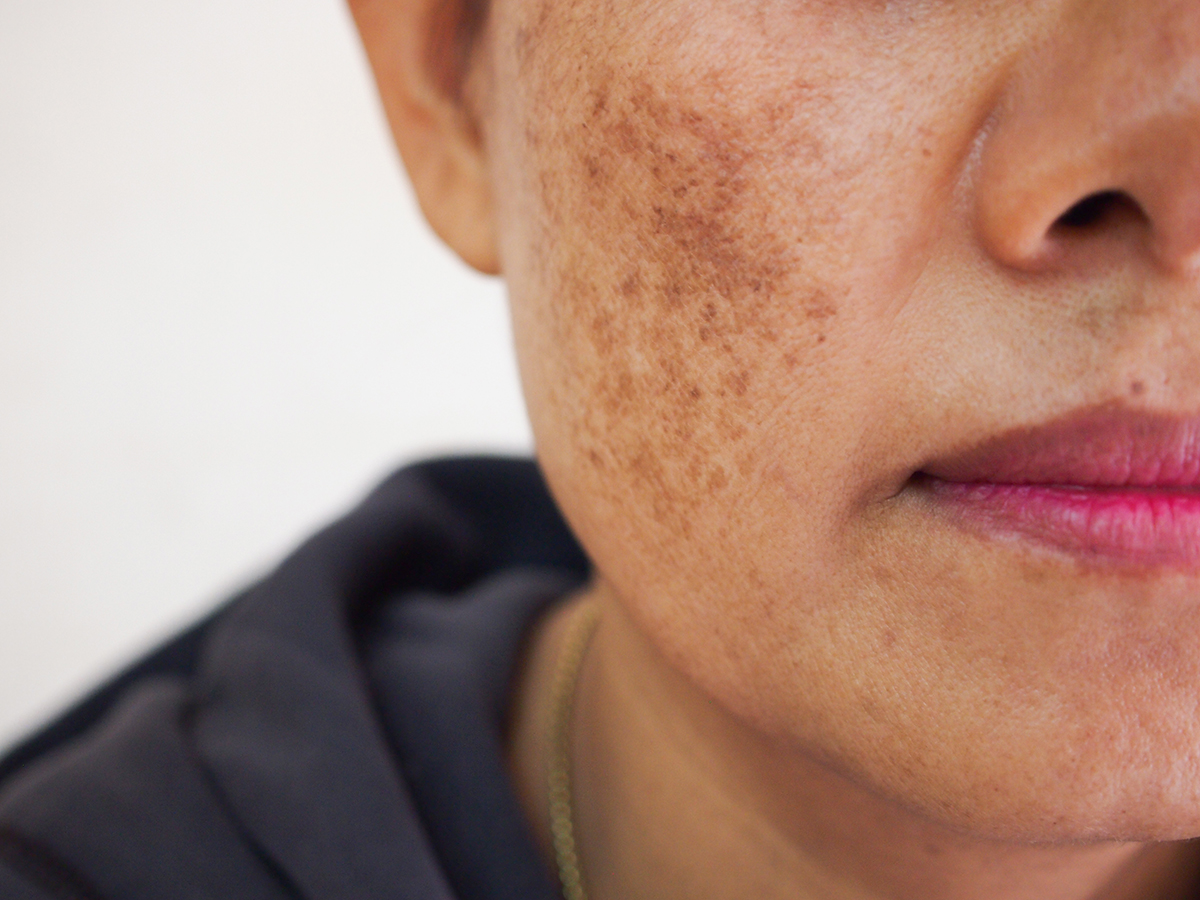Melasma
Background
Melasma is a skin pigmentation disorder, characterized by hyperpigmentation of the skin due to hyperfunctioning melanocytes. It affects the sun-exposed areas of the face, such as the centrofacial, malar, and mandibular regions. It is most prevalent among young to middle-aged women.
Etiology
According to some theories, melasma can be attributed to UV irradiation exposure as the melanocytes of involved skin will be hyperfunctional and will release larger amounts of melanin pigment compared to uninvolved skin. Another theory suggests that melasma may be caused by skin photoaging that affects genetically predisposed individuals.
Risk factors
There are multiple factors that increase the risk of developing melasma. These factors include genetics, exposure to sunlight, skin type, and hormonal factors (including pregnancy, hormonal therapies, and oral contraceptives).
Clinical features
Melasma presents with light to dark brown or brown-grey patches with irregular borders which appear primarily on the face. Precisely, it affects the forehead, nose, cheeks, upper lip area, and chin in a symmetrical pattern
There are three common facial patterns of melasma distribution:
1- Centrofacial melasma generally affects the forehead, cheeks, nose, upper lip, and chin
2- Malar melasma mainly affects the cheeks
3- Mandibular melasma affects the lower jawline.
Extra facial melasma, which is less common than the facial melasma and usually difficult to treat, can occur on the arms, forearms, chest, or back of some patients.
Diagnosis
Melasma is typically diagnosed clinically. The Wood’s lamp examination can be helpful in identifying the location of pigment (epidermal or dermal), especially in those with lighter complexions. Dermoscopy has become increasingly useful in diagnosing melasma and determining its level of pigment deposition.
Management
All patients with melasma should use a broad-spectrum sunscreen with an SPF of 50 or higher on a daily basis.
The first-line treatment regimen for mild melasma is hydroquinone 4% cream. Patients with mild to moderate melasma use fluocinolone, hydroquinone, and tretinoin triple combination creams (TCC), rather than hydroquinone 4% cream alone.
Chemical peels (glycolic acid, other alpha-hydroxy acids, salicylic acid, Jessner’s peel, and trichloroacetic acid) are other treatment options for patients with melasma who have failed to respond to topical skin lightening therapies.
For patients with melasma who have not responded well to topical treatments and chemical peels, lasers and light therapies can be provided.
Written by
Ghida Altammami, medical student
Revised by
Maee Barakeh, medical student
References
Bolognia textbook of dermatology
DermNet
UTD

